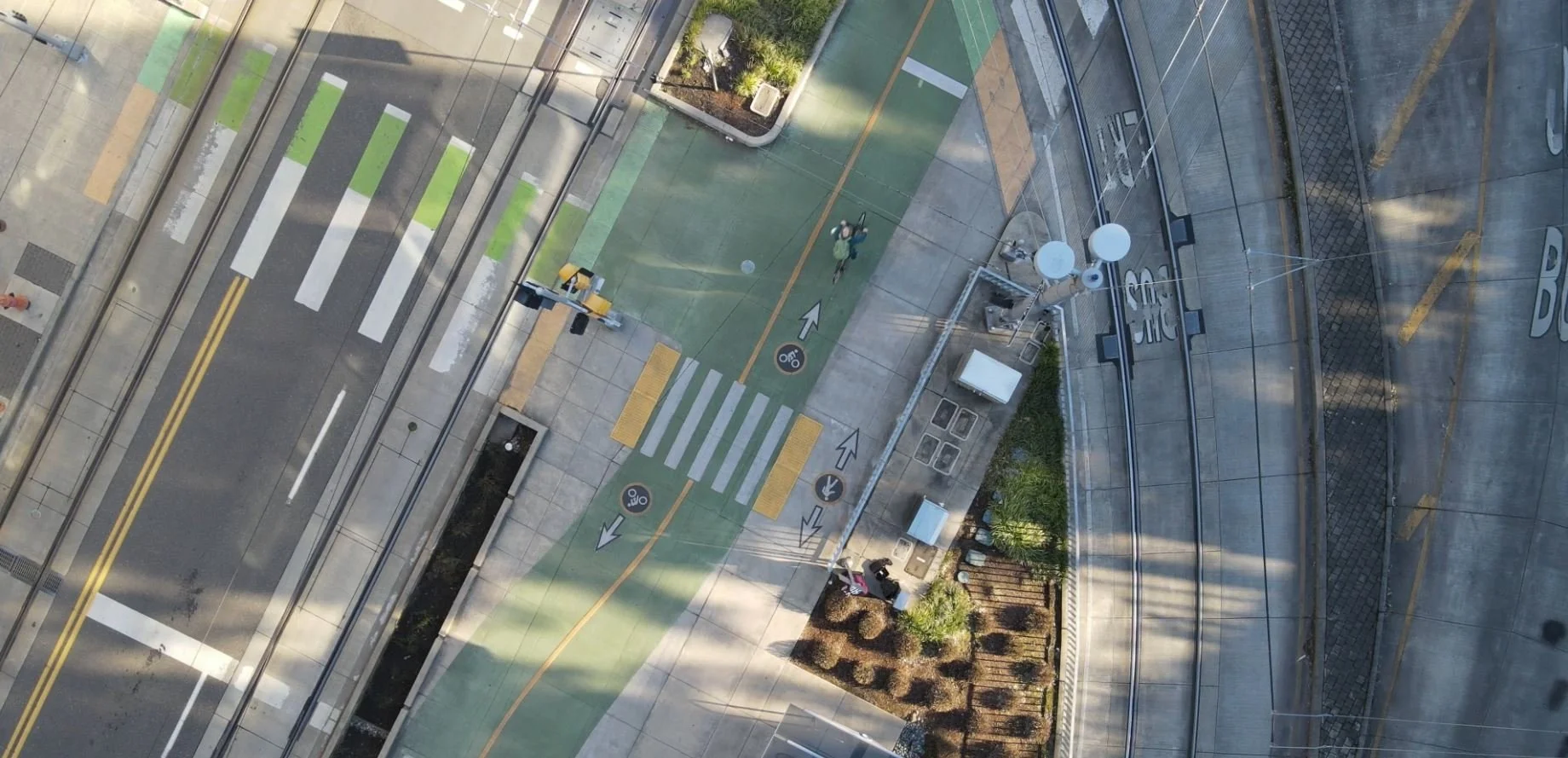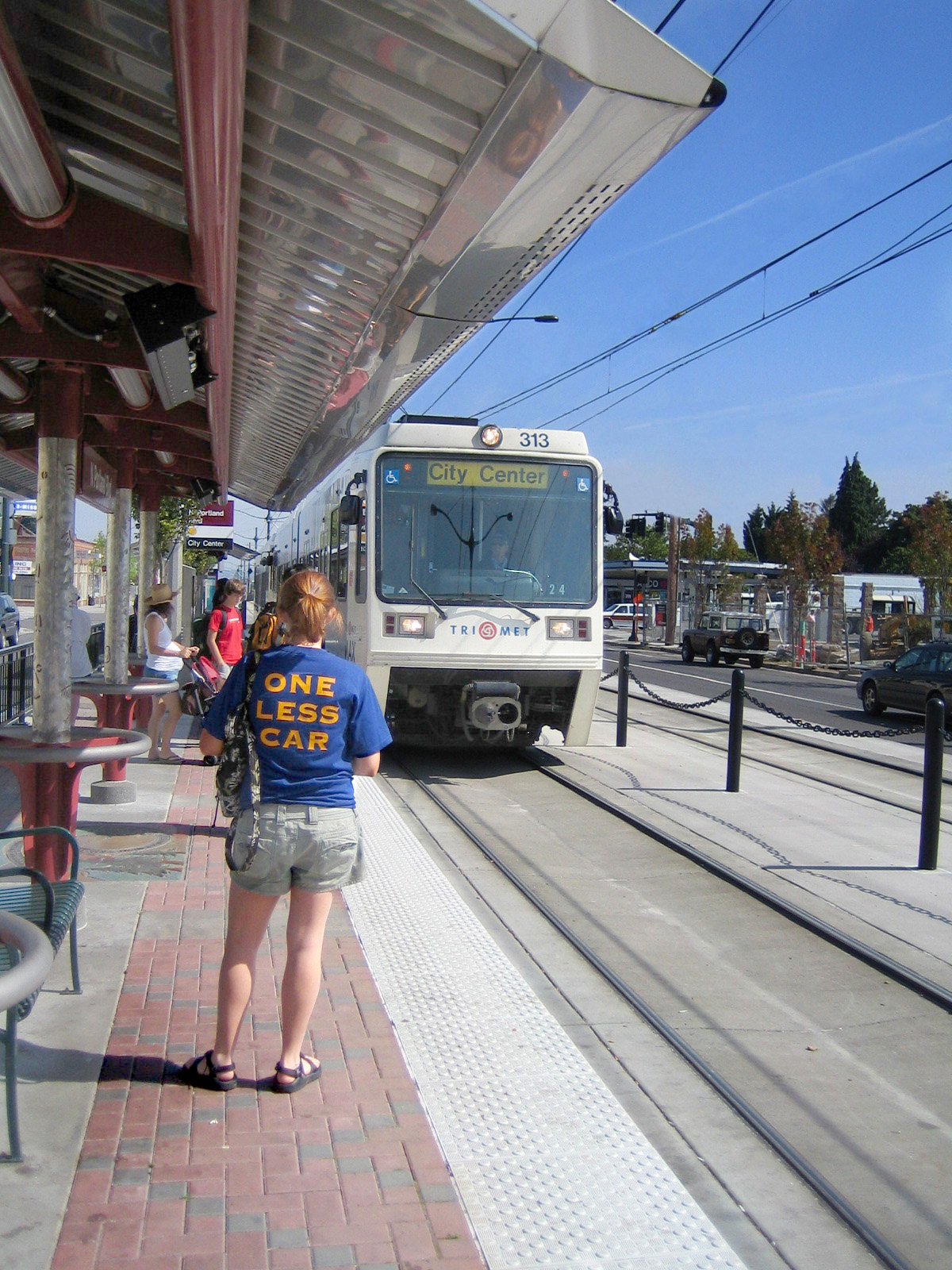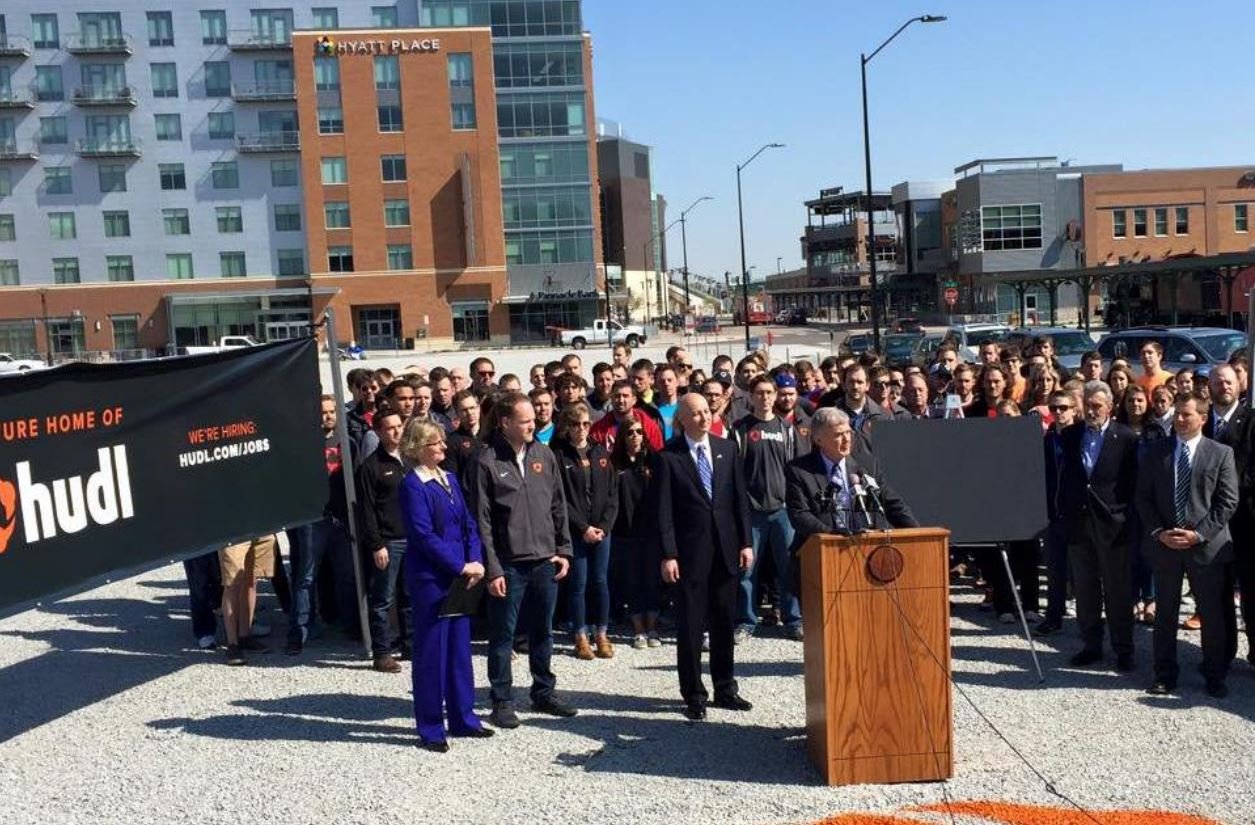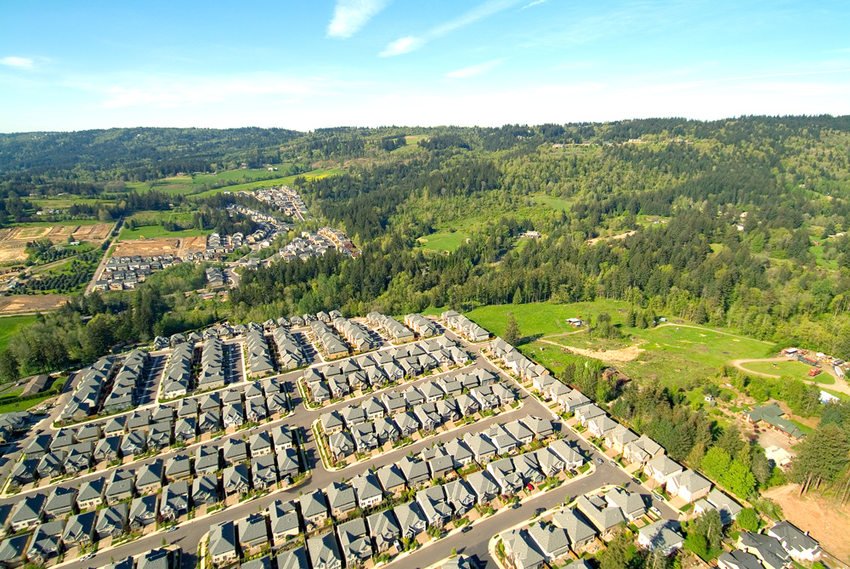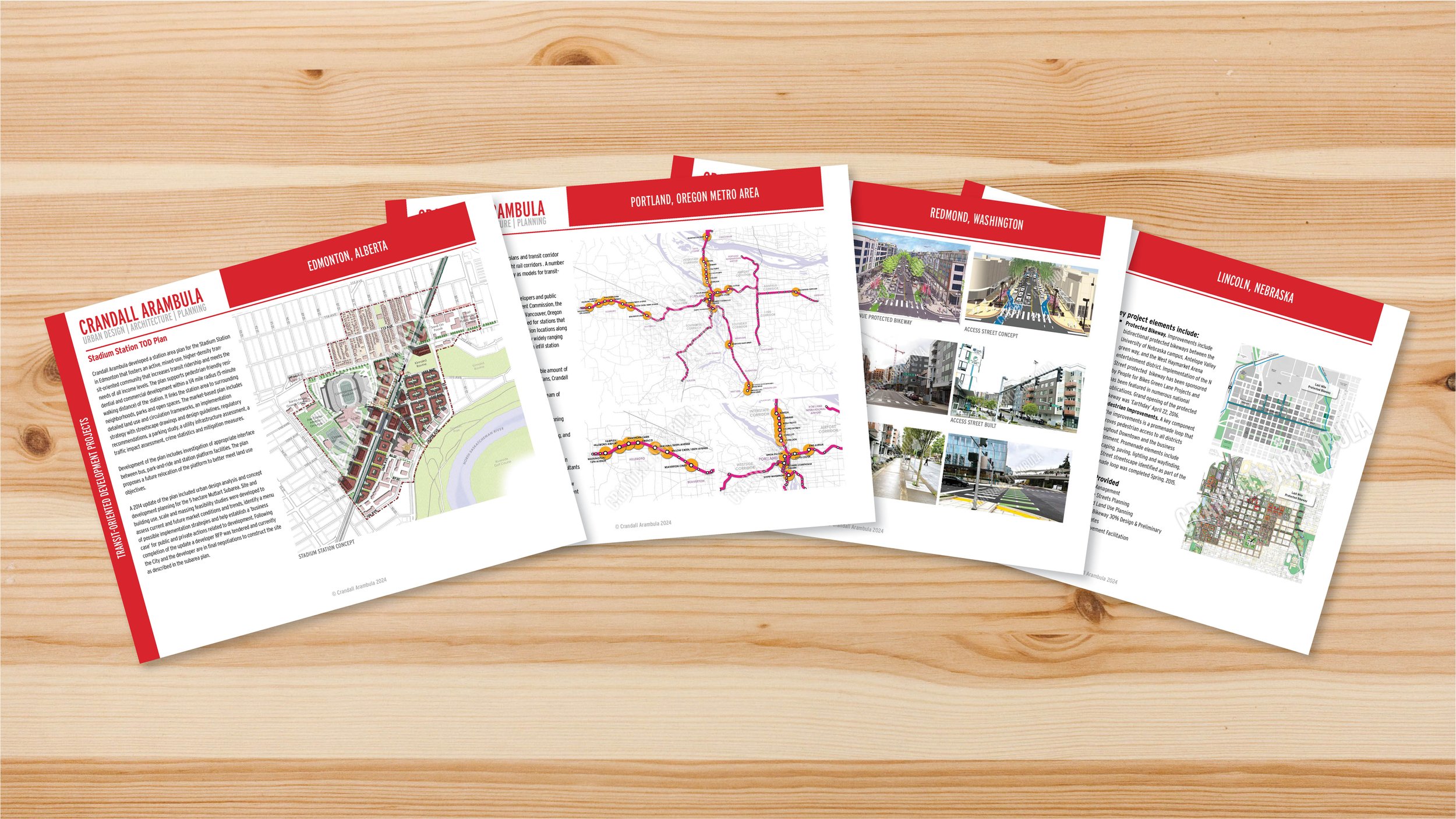Climate Change
Planning for a Planet on Fire
Long-term shifts in global or regional patterns of temperature, precipitation, wind patterns, and other aspects of Earth's climate system are primarily caused by human activities, particularly the burning of fossil fuels such as coal, oil, and gas, which release greenhouse gases (GHGs) into the atmosphere.
The consequences of climate change are wide-ranging and include rising global temperatures, melting ice caps and glaciers, sea-level rise, more frequent and intense extreme weather events (such as hurricanes, droughts, and floods), altered precipitation patterns, and shifts in ecosystems and biodiversity. These changes have serious implications for food security, water availability, human health, and economic stability.
Crandall Arambula has developed and is implementing an innovative integrated land use and transportation planning model for low-emission communities that are resilient in the face of climate change.
Approach
How we deal with the consequences of our collective neglect is the preeminent moral challenge of our time. In this one interconnected world, climate change will affect all people in all places. If we are to limit global warming to 2 degrees Celsius compared to pre-industrial levels,
Cities of all sizes and demographics will require low-cost effective and easy-to-implement planning strategies to reshape our communities to mitigate and adapt to the impacts of climate change.
Transportation
While mitigation and adaptation strategies to reduce GHG by transitioning to renewable energy sources, improving energy efficiency, and implementing sustainable practices in sectors like industry and agriculture are important, Crandall Arambula believes that planning and urban design professionals can have the most profound impact on mitigating climate change by focusing on the transportation sector. This is because transportation is the leading source of greenhouse gas emissions. Reducing transportation-related emissions requires proven statewide and local planning policies and urban design approaches that shorten and eliminate auto trips.
BODs and MODs
Our innovative Bicycle-Oriented District (BOD) and Mobility-Oriented District (MOD) planning models have the potential to significantly reduce greenhouse gas emissions, along with ancillary community benefits, including traffic congestion reduction and equitable access to affordable housing, employment, and education. The BOD and MOD models work for cities of all sizes and a range of transportation services and vehicles.
The most effective approach for reducing greenhouse gas emissions
The most effective approach to limiting GHG emissions is the MOD which integrates center-based land use planning with a symbiotic network of protected bicycle lanes and fixed route rail or bus transit networks. This approach builds on the traditional center-based land use densities associated with Transit Oriented Development (TOD). By adding a network of protected bikeways, the MOD expands the quarter mile (5-minute walking trip) service area of a transit station to one mile (a five-minute bike ride) out from the station.
Residents, employees, and other users of MODs tend to own fewer cars and take fewer automobile trips. The potential benefits of MODs include both the reduction of greenhouse gas emissions by up to 50% and an economic stimulus for the local marketplace that results from money spent at local businesses rather than on gasoline.
Resilience
Resilience starts with reducing vehicle miles traveled.
Most communities recognize the need to plan for a changing world but are at a loss for the most effective ways to preserve their environment for future generations and to promote economic growth and prosperity.
DOWNTOWN SEATTLE
Urban growth is inevitable.
By 2030, over 60% of the world’s population will live in urban areas. This increase in urbanization is creating incredible stress on our environmental, economic, and social fabrics, not only worldwide but also within our local communities. Those cities that address the issues and adapt positively to change will thrive. Cities that react to, rather than plan for, change will suffer.
INTERSTATE MAX STATION AREA PLANNING - PORTLAND, OREGON
‘Resilience’ is Crandall Arambula’s proactive strategy for responding to a fast-changing world in an effective and achievable manner at regional and local scales. We offer practical, simple, and straightforward approaches and solutions.
REDUCE VEHICLE MILES TRAVELED
Our Resilience strategy incorporates and fosters all sustainable best practices. Yet, we believe the most meaningful sustainable practices can translate into immediate and substantial planning actions and projects. While technological innovation and economic incentives have a place, Resilience must start with reducing vehicle miles traveled (VMT). Our strategy can provide a framework for reducing both the length and the number of trips, resulting in reduced greenhouse gas emissions and, in turn, local economic stimulus.
BENEFITS:
Your Wallet
Spending less money on fuel, parking, auto maintenance, and other auto-related expenses can result in significant financial benefits for you and your community.
Your Time
Spending less time driving can translate into more personal time for you and greater productivity for your community.
Your Health
Replacing auto trips with walking and biking trips can result in significant health benefits for you and your community.
The Environment
Reducing energy consumption in the transportation, housing, commercial, and industrial sectors has the potential to significantly improve air and water quality.
Housing Crisis
We create solutions to address affordable housing needs.
The affordable housing crisis in America is a widespread and growing problem of inadequate access to affordable housing for many individuals and families. It is characterized by rising housing costs, stagnant or insufficient wages, and a shortage of affordable housing units.
Rapidly increasing housing costs, particularly in urban areas and regions with high demand, have outpaced income growth for many people. This has resulted in a significant portion of households spending an excessive proportion of their income on housing, leaving them with limited resources for other essential needs.
The crisis also affects vulnerable populations, such as low-income individuals, families with children, seniors, and individuals experiencing homelessness. These groups often face significant challenges in finding affordable and stable housing, leading to increased housing insecurity and homelessness rates.
CONTRIBUTING FACTORS
Several factors contribute to this crisis. First, there is a significant mismatch between the supply and demand for affordable housing. The construction of new affordable housing units has not kept pace with the increasing demand, leading to a scarcity of available options.
Additionally, existing affordable housing stock is often aging and in need of repairs or renovations, further limiting the number of suitable and affordable units.
Policies for Affordable Housing
Crandall Arambula’s efforts to address the affordable housing crisis include support for the implementation of affordable housing policies at the local, state, and federal levels, such as:
The elimination of single-family zoning and minimum parking requirements; mandates for ministerial review of housing projects using objective development standards and streamlined approval processes and timelines;
Subsidies or vouchers for low-income households.
Moreover, the firm supports government gap financing for the delivery of new affordable housing nonprofit housing organizations and housing authorities that are working to increase the availability of affordable housing and provide support services to those in need.
Planning for Affordable Housing
The affordable housing crisis cannot be solved with policy and financial subsidies alone.
It requires comprehensive and sustained land use planning and urban design efforts at the local level that prioritize affordable housing as a social and economic imperative, where everyone has access to safe, decent, and affordable housing.
Increasing Housing Supply
Crandall Arambula’s housing plans and strategies have effectively increased housing supply by creating land use frameworks for infill mixed-income housing neighborhoods that:
Substantially increase both market rate and affordable housing supply. We identify where construction costs can be minimized and housing supply can be maximized.
Provide affordable housing in locations near transit stations, grocery stores, schools, and medical and employment centers that eliminate or reduce the need for automobile ownership, which frees up money for rent, food, health care, and other essential needs.
Create livable communities by providing a range of densities and unit types.
Mix market rate and public housing development sites. By mixing (typically 2/3 market rate and 1/3 public and affordable housing), we can create an environment that low-income residents do not perceive or stigmatize as isolated public housing ‘projects’.
Include amenities such as parks within easy walking distance of all multi-family units.
Include essential infrastructure improvements such as protected bike lanes.
Revitalization Series
Our recipes are available to you.
Successful cities share similar features or ingredients. Our revitalization series is a recipe book that can be used to find the right mix for your city. Contact us for more information and to be added to our Revitalization Series mailing list.
In the future, cities will be impacted by climate change, rising energy costs, and related environmental issues. It is possible to anticipate the changes and initiate actions to manage the potential impacts.
RECIPE BOOK
Our Revitalization Series is a recipe book that you can use to find the actions your city should consider. Contact us for more information and to be added to our Resilience Series mailing list.
RECIPES:
Starting
Community Vision
Public Involvement
Conflict of Interest
Designing
Capturing Market Demand
Downtown Plans
Build-Out Analysis
Retail Street Fundamentals
Pedestrian-Friendly Streets
Public Squares
Civic Uses
Shopper-Friendly Parking
Station Area Planning
Implementing
Final Reports
Implementation
Tax Increment Financing
Systemwide TOD Regulations
Design Guidelines
Silver-Bullet Projects
Shelf Plans
Resilience
Reducing Auto Travel
Bicycle Centered Development
Meet the MOD Men
Optimize Your Return on Transit
Investment
Reducing Greenhouse Gas Emissions

